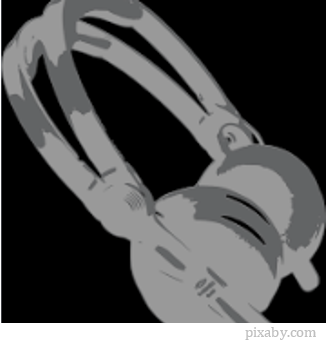May 20 – 21
Rap is basically spoken poetry with a strong emphasis on rhythm and rhyme. Below is an incredibly moving music video made by Carrie Underwood and Ludacris for the 2018 Super Bowl. Ludacris’s rap is embedded in the song. It’s a special kind of poem: an acrostic. Each line emphasizes one letter from the word “Champion”, so that reading the first letter of each of these words down a page of lyrics would spell the word,
Although the next video may be most suited to preschoolers, the truth is anyone would love this rap of Fox in Sox. And fortunately, it’s one of a series. Younger kids will love listening. Here’s a challenge for older kids: see if YOU can rap a rhyming children’s book. A great way to connect with younger cousins or other tots you are missing right now would be rap the a book by video chat or record a book for them.
As discussed, rap is essentially spoken word poetry with a strong instrumental beat. Not all poetry places the emphasis on rhyme and rhythm found in rap and other spoken word poetry. So what makes a poem a poem?
Next is a link to a video on how to rap that adults may want to view before before sharing. It is a clean video with excellent tips on rhyme and rhythm. This was chosen for it’s emphasis on language, however in contains sales pitches and refers viewers to other rappers families may not be comfortable with. Parents can look for other resources using the search terms “rap beginners kids.” For teens, drop “kids” but parents may especially want to screen for content. There are some wonderful videos on the poetics of rap, but they may contain violent language or other material that is not suitable.
Movement
Rock Podcast. Spare the Rock is a weekly radio show out of KUTX 98.9, Austin. This web link takes you to their blog, where if you scroll down you will find their most recent playlist. Now, we put this under movement for a reason, so grab your phone, connect with your friends, and throw a virtual dance party.
Science and Math
But Why This semi-weekly NPR “kids and family” podcast digs into life’s pressing questions, like “How Do People Fall Asleep?” and “Do Animals Get Married?” This podcast does cover some topical issues, such as the COVID-19, so some parents might want to pre-screen or discuss the podcasts. Technically, these aren’t all Science and Math podcasts, but … close enough.
Art and Literature
Today’s reading subscriptions will appeal to younger children. To make this suitable for older readers, consider having them create their own read aloud recordings to share with younger children. They should think about how they would introduce and conclude their reading, and how they will use vocal tone to make it interesting.
Story Podcast Circleround is a weekly podcast from WBUR 90.9 Boston. The website includes links to coloring books and soundtracks.
Kids’ Books Read Aloud. Adapted. If listening to read-alouds doesn’t work for you, this YouTube series features books you can read along with.
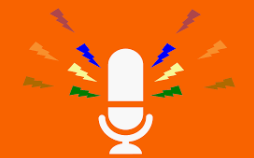
March 26
Podcasts and Subscriptions
Movement
Rock Podcast. Spare the Rock is a weekly radio show out of KUTX 98.9, Austin. This web link takes you to their blog, where if you scroll down you will find their most recent playlist. Now, we put this under movement for a reason, so grab your phone, connect with your friends, and throw a virtual dance party.
Science and Math
But Why This semi-weekly NPR “kids and family” podcast digs into life’s pressing questions, like “How Do People Fall Asleep?” and “Do Animals Get Married?” This podcast does cover some topical issues, such as the COVID-19, so some parents might want to pre-screen or discuss the podcasts. Technically, these aren’t all Science and Math podcasts, but … close enough.
Art and Literature
Today’s reading subscriptions will appeal to younger children. To make this suitable for older readers, consider having them create their own read aloud recordings to share with younger children. They should think about how they would introduce and conclude their reading, and how they will use vocal tone to make it interesting.
Story Podcast Circleround is a weekly podcast from WBUR 90.9 Boston. The website includes links to coloring books and soundtracks.
Kids’ Books Read Aloud. Adapted. If listening to read-alouds doesn’t work for you, this YouTube series features books you can read along with.
March 25
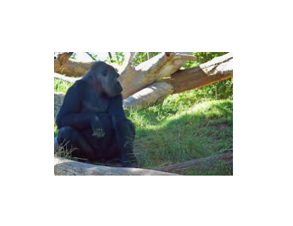
Science and Math
Zoo Live Cams. Take a virtual field trip to the San Diego Zoo. Visit koalas, polar bears, tigers, and many more animals in real time. This website also has a wide selection of activities including video games and arts and crafts activities.
Art and Literature
Dioranimal Now create your own zoo. Look at this Pinterest Board to get some ideas and create a zoo in your own home. Take US on a field trip. Tag enrichmentalliance on Instagram.
Dioramas Adapted. If you like a little more direction when you make things, this video walks you through the steps of creating a diorama with cardboard and magazines. If you don’t have access to magazines, print or draw your animals.
Movement
BE an Animal. Here’s a game you can play with your friends, even while you are social distancing. Learn some animal moves from this exercise video and use FaceTime or other social media to create a “live cam”. Act out an animal and ask your friends to guess what you are.
March 24
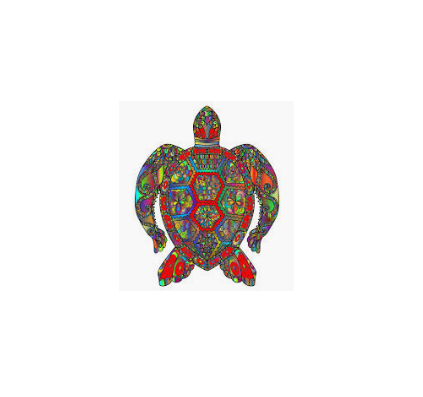
Anansi and The Turtle Younger children will enjoy the video for its own sake, but older children will probably appreciate this more as an introduction to storytelling. How does the story teller use her voice and body to engage the viewer? See the Movement link below to connect this video to a storytelling activity.
Movement
Storytelling Scroll through these lesson plans from Scholastic to get ideas retelling a story. Focus on exaggerated movements.. The Fox and The Stork would be a great one to pair with Anansi and The Turtle.
Science and Math
Turtle Salad. Scale this down and make a Turtle Salad for your family. But leave out the turtle meal!
Turtle Salad Adapted. This salad recipe is pretty similar, but includes step-by-step instructions with pictures.
March 23
Art and Literature
Story Generator. On this intriguing website by Scholastic, an animated machine generates story prompts at the pull of a lever. The settings can be adjusted by grade level.
Adapted. The level of the story generator above can be adjusted, but if you need a more concrete activity, try these “meaningful story prompts” from Old Dominion University. Scroll down to Story Jars and you will find an activity similar in nature to the story generator. Unfortunately, there seem to be some formatting issues on the document, but the idea still comes through.
Science and Math
Hand sanitizer is no substitute for good old fashioned hand washing, but your kids can make their own hand sanitizer to have in a pinch if you have access to these ingredients. The essential oils are optional.
Movement
Indoors bowling. Recycle empty bottles into an indoors bowling alley. This website recommends adding a little water if the bottles tip too easily, but you might want to substitute something less messy, like pennies or a few pebbles.
March 22
Science and Math
Rube Goldberg Inventions Ideas for zany inventions inspired by the Rube Goldberg, the cartoonist whose ridiculous “time-savers” were more trouble to put together than the task itself ever might have been. This site offers video examples, ideas to get you started, and lists of materials you might find around the house. If you don’t have one of these items, just try something else. Maybe small books will work as well as dominoes. Try paper towel rolls if you don’t have plastic tubes. And we sure will want to see your pictures and videos for this one, so please tag us on Instagram. Just google Rube Goldberg Inventions if you want to see more.
Movement
Obstacle Courses This website lists 25 ideas for obstacle courses, several of them themed. You may not have all the items suggested, but they should give you some ideas for using the materials you do have.
Obstacle Courses Adapted These are slides from a presentation on wheelchair obstacle courses in a school setting, so not all of these will be practical to create at home. There are, however, ample images that you could recreate or adapt for use in your house or apartment, so go ahead, try this at home.
Art and Literature
Cambodian Myth of Lightning, Thunder, And Rain. This TED animation is a beautiful presentation of a Cambodian Myth. A lesson plan is available and there are additional TED animations of children’s tales from around the world.
March 21
Sticking with a spring theme a little longer, today’s enrichment activities allow children to play and create with the wind.
Movement
Be a Wind Dancer. As March blows through, get outside and blow with it. Take along scarves, ribbons, anything that flows. Watch the wind blow on natural objects like trees, grass, flowers, leaves. Make up some dance moves based on how the wind moves these objects.
Art and Literature
Wind Sculpture. Create a fanciful wind sculpture and put it outside or in front of an air vent. First watch the video linked on the left for some inspiration. Now watch this video on creating wind sculptures, and let your imagination go wild. Besides the materials in this video, what can you find around the house to create a kinetic sculpture at home? Search YOUTUBE for “wind sculpture” and “kinetic sculpture” for more mesmerizing videos. And of course, please tag enrichmentalliance when you post your amazing pictures!
Science and Math
How fast is the wind? These simple directions show how to use household materials to make an anemometer, an instrument used by meteorologists to study wind speed. If you can’t find the exact materials at home, try out different materials and let us know what works for you.
Science and Math Adapted
Pinwheels. Step by step instructions, with pictures. Try different types of paper to make a variety of beautiful pinwheels, and show us what you made. You can take these outside and let the wind blow them, or run and dance with them. Did you know that blowing on a pinwheel can make you feel less stressed?
March 20
This is the first full day of spring! All of our activities today are themed on nature. Use your science and movement activities as inspiration for writing poems about nature, and consider submitting to the Washington Post Nature Poem contest, linked below. The National Parks have opened to the public at no charge, so if you have a park nearby and a way to get there, you might do your nature studies there. Just remember social distancing.
Art and Literature
Nature Poetry Contest. Take a good look at this beautiful spring day. Maybe you’re looking out your window, maybe you’re taking a walk or a hike. Write down six things you see in nature (examples: bird, tree, cloud). Write down six things that are happening in nature (examples: soar, sway, float). Write down six things to describe what you see (peacefully, green, soft). Now use these to write a poem. If you are the kind of person who needs a little structure to write, see Arts and Literature Adapted below. PLEASE NOTE, IF YOU ARE SUBMITTING TO THE KIDSPOST CONTEST, DON’T SHARE THESE POEMS WITH US BEFORE APRIL 22.
Art and Literature Adapted
Nature Poem Activity. Our POPnPOEMS workshops use pop songs suggested by participants to explore poetry. This activity, built around “Deep in the Meadow” from “Hunger Games” includes visual aids, word banks, and patterns for creating poems. If you are interested in submitting your poems, see the entry above. This entry is from our director’s personal website, which contains one additional poetry activity.
Science and Math
Nature Camera-Scavenger Hunt. Grab a cell phone or a pencil and paper, look for items on this list, and draw or photograph them . Or create your own scavenger hunts and use social media to challenge your friends. We’re dying to see what you find, so please tag enrichmentalliance on Instagram. This website includes additional outdoors spring activities.
MOVEMENT
Nature Walk. This blog offers great guidance for turning an everyday walk into a nature museum. Activities in this blog combine beautifully with the poetry and scavenger hunts described above.
Science and Math
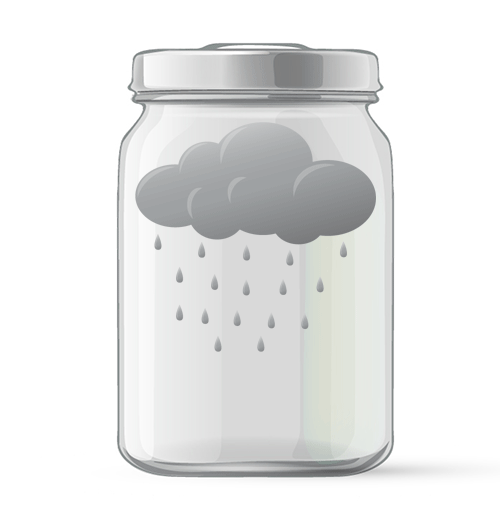
March 19. Rain in a Jar. Can’t leave the house? Don’t let it RAIN on your parade. We chose this activity because it requires only a jar, ice, and hot water, and because it was a popular activity when our director taught elementary school. This requires parental involvement because it uses boiling water. For related activities, type “Science in a Jar” in your YOUTUBE search window.
Tag us to show off your #raininajar
#enrichmentalliance; #kidsscienceexperiments; #scienceathome; #covid19kidsathome; #covid19kidsactivities
Movement Adaptive
March 19. OT Sensory Dance Video. Set to “Uptown Funk,” these moves were designed for children and youth on the autism spectrum, but should work well for other Developmental Differences. Have fun. Don’t try to be perfect. Just enjoy these moves, and maybe make up some moves of your own.
Movement
March 19. Kids Hip Hop Class. An on-line dance studio offers lessons on dance moves. This sample lesson is just one of a series. Check out their other online lessons. Have fun. Don’t try to be perfect. Just enjoy these moves, and maybe make up some moves of your own.
March 19. Epamdimonimous. (We can only guess at that spelling!) Donna Washington is a captivating NC storyteller who delighted our after-school students when she presented her engaging workshops here. To stream more stories, visit donnawashington.com and click videos.
